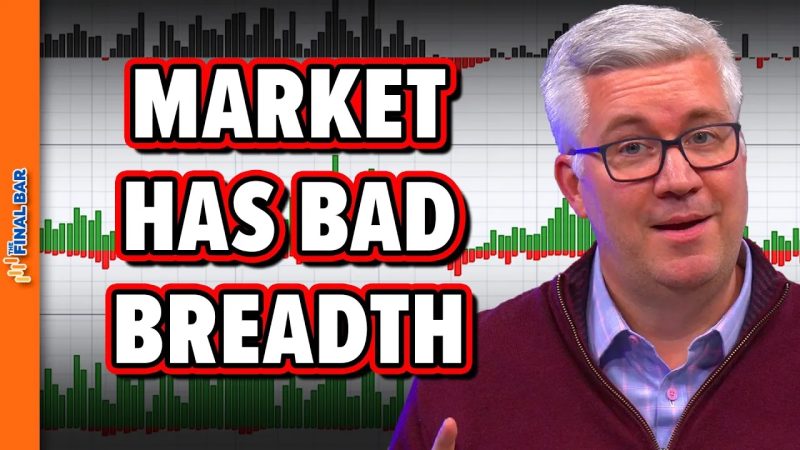Market breadth is a crucial concept in the world of investing. It refers to the overall health and direction of a financial market. Market breadth indicators are used by investors and analysts to gauge the participation and strength of the market as a whole. When analyzing market breadth, investors look at various factors such as the number of advancing versus declining stocks, trading volume, and the overall number of stocks hitting new highs or lows.
Recently, concerns have been raised about poor market breadth in the stock market. This means that even though major stock indexes, such as the S&P 500 or the Dow Jones Industrial Average, may be reaching new highs, the strength and participation in the market may not be as widespread across the various sectors and individual stocks. When market breadth is poor, it can be a warning sign for investors, indicating that the market rally may not be sustainable or that there could be underlying weaknesses in the overall market.
For individual investors, poor market breadth can have several implications. One of the main concerns is that a narrow rally, driven by a handful of large-cap stocks, may not reflect the true health of the overall market. When market breadth is poor, there is a risk that a market sell-off could be more severe and widespread, affecting a larger number of stocks and sectors.
Additionally, poor market breadth can make stock selection and diversification more challenging for investors. In a market environment where only a few stocks are driving the overall market higher, it can be tempting for investors to chase returns in those popular stocks. However, this can lead to a lack of diversification in their portfolios and increase their exposure to potential risks if those high-flying stocks were to experience a downturn.
Furthermore, poor market breadth can also impact the performance of various investment strategies. For example, momentum strategies that rely on strong market participation and breadth may underperform during periods of poor market breadth. Similarly, value investors looking for undervalued opportunities across a broad range of stocks may find it more challenging to identify attractive investments in a market with poor breadth.
In conclusion, poor market breadth is a critical factor for investors to monitor and consider when making investment decisions. While a strong performance in major stock indexes can be reassuring, it is essential to look beyond the headline numbers and assess the underlying strength and participation of the market. By paying attention to market breadth indicators and diversifying their portfolios accordingly, investors can better navigate the challenges posed by poor market breadth and position themselves for long-term success in the stock market.
